When Six Americans Defeat an Invading Army: Robert A. Heinlein’s Sixth Column
Sixth Column by Robert A. Heinlein. First Edition:
Gnome Press, 1949. Cover by Edd Cartier
Sixth Column
by Robert A. Heinlein (Gnome Press, 1949, 256 pages, $2.50 in hardcover; serialized earlier in Astounding Science Fiction, January-March 1941)
Sixth Column was the earliest novel-length work by Robert A. Heinlein, though it was serialized in Astounding magazine (Jan, Feb, and March 1941, under the pseudonym Anson MacDonald) and not published in book form until 1949, by which time three or four other Heinlein novels had been published as books (Rocket Ship Galileo (1947), Beyond This Horizon (1948), Space Cadet (1948), and perhaps Red Planet, also 1949).
First published in hardcover by Gnome Press under the magazine title Sixth Column (adding the subtitle “A Science Fiction Novel of Strange Intrigue”) it was reprinted for many years in paperback by Signet under the blander title The Day After Tomorrow (a 7th printing with a Gene Szafran cover is shown below, along with the 2012 Baen edition I’ve read for this review). The book isn’t long; 174 pages in the Baen edition, 144 with Signet’s tinier print.
The retitled The Day After Tomorrow, Signet 7th printing circa 1971, cover by Gene Szafran;
Baen’s 2012 edition, cover by Bob Eggleton
It wasn’t Heinlein’s first fiction long enough to be serialized in multiple issues of a magazine; the novella “If This Goes On—” appeared in Astounding a year before, in Feb and March 1940, and later included as the anchor story in the collection Revolt in 2100 in 1953. (I posted about that on my blog four years ago.) In both cases there are suggestions that the works were expanded for book publication, but I can’t find any specific documentation of that, nor do I own the original magazines that published these stories to check that out for myself. Also, some sources call “If This Goes On—” a novel, but it was never published as a separate work.
Gist
The United States has been conquered — apparently sometime in the future of the author writing in the early 1940s — and occupied by PanAsians. At a secret research center in the Rocky Mountains, an internal experiment has killed all but six men. Those six refine the experiment to create a device with various miraculous effects: vortex beams, tractor beams, and the ability to kill people selectively by race. They set up a phony religion to fly under the radar of the occupiers, gather recruits and spread to numerous cities, and use various strategies to humiliate and defeat them.
Take
Despite its Deus ex Machina plot (relying on the amazing effects of an invention) and a racist depiction of Asian invaders, this is fairly riveting story that fulfills its improbable premise: to show how six Americans, albeit with virtually magic powers, can defeat an invading occupation force.
Summary with some comments [[ in brackets ]]:
- The opening lines establish that radio reports confirm the destruction of Washington DC and Manhattan; America has been defeated by PanAsians. The six men hearing these reports have gathered at the Citadel, a secret research center in the Rocky Mountains of Colorado. They include a Major, Whitey Ardmore [[ Whitey was a not-uncommon nickname of the era, but still ]], who accepts a command to proceed on their own and prosecute war against the invaders, a mathematician (Calhoun), a biologist, a radiation specialist, and three others, a machinist, a cook, and a cook’s helper. Ardmore has them repeat their military oaths to the US Constitution.
- The three scientists investigate the experiment that mysteriously killed humans but not lab animals; the research was into additional spectra, between e-m, magnetic, and gravimetric. They refine the ‘Ledbetter effect’ (named after the lead scientist) into a controllable device.
- Ardmore maintains discipline and official duties. Calhoun is patronizing. The cook’s helper, Thomas, turns out to have been a former lawyer, and hobo. To get ‘intelligence’ about what’s going on outside, Thomas is sent out to contact other hobos, and to scout nearby cities. We follow his POV as he visits a hobo camp, where he learns that more PanAsians are arriving every day, and American culture is being systematically wiped out. He heads to a city, where the whites are required to watch TV every night at 8pm for orders. The churches are among the only institutions left alone; Thomas reflects that it’s common for invading forces to leave local religion alone.
- Thomas meets an old friend, Frank Roosevelt Mitsui, whose family was killed by the invaders — it’s their policy to liquidate half-breeds. Thomas offers Frank a chance for revenge, and returns to the Citadel with him. Ardmore subjects Frank to careful scrutiny and truth-drug testing before letting him in. [[ This is Heinlein mollifying the situation somewhat; not every Asian is a bad guy. ]]
- Ardmore, Calhoun, and the others debate strategy, and consider extending the idea of European ‘fifth columns’ – traitors – to its antithesis, an internal ‘sixth column’ of patriots devoted to bringing the invaders unease. They can’t engage in crude attacks; trying that once leads to the occupiers retaliating against Americans at random in their homes.
- Ardmore realizes they can start a new religion! They use the Ledbetter effect, with its tractors and repressors, to carve a temple out of the mountain right above them.
- Their Ledbetter force has whatever magical power the plot requires, it seems, e.g. making PanAsians, but no white person, overcome with unease should they attempt to enter the temple
- When a PanAsian lieutenant arrives to investigate, he is met by Thomas playing a priest with a halo above his head (as illustrated on the first Baen Books edition of the book, shown below), issuing warnings against profaning the god the Lord Mota of the white people. The Ledbetter effect goes into action, with subsonic feelings of dread overcoming the Asians, but not the whites.
- They discover that the Ledbetter effect, properly tuned, kills disease organisms; their new church can heal the sick. And they can manufacture gold coins too!
- Soon they establish a temple in the nearest city, Denver, in an abandoned warehouse, deliver sermons about Lord Mota, and attract followers with free food bought with gold coins.
- A spy breaks into their quarters; they execute him by slitting his throat in the bathtub. It’s war.
- They set up a temple in Salt Lake City, and then in other cities. Members of traditional religions join their secret army.
- Eventually the PanAsians become concerned about this new religion, and Ardmore is summoned to a meeting with the Prince Royal. Ardmore responds regally and manages to twist the Prince’s words around to leave him on the defensive [[ a cleverly written, effective scene ]], while staying in touch with home base via a communicator in his headgear, using slang and double-talk to confuse any spy microphones.
- The PanAsians start rounding up whole congregations. But by this time the Citadel has manufactured cheap Ledbetter effect weapons to enable widespread attacks directed at PanAsians (without affected whites). Ardmore and company invade the palace, issue a warning to the Prince Royal, and kill every other PanAsian in the building. Others kidnap PanAsian officials, strip them and stencil offensive terms on their bodies, and dump them naked in the streets – to humiliate them. As reports pass among the PanAsians, the whites jam all radio transmissions.
- The white resistance use weapons that trigger ‘colloidal explosions’ against the PanAsians (their bodies explode into clouds of oily matter), and finally, project a 1000-foot high figure of Lord Mota — as depicted on the cover of the first Astounding where the story was serialized, shown here — to call forth Americans and warn the Asians to return to where they came.
Astounding magazine, January 1941, first installment
of “Sixth Column”; cover by Hubert Rogers
- The next phase of resistance involves pranks against PanAsian officials, e.g. kidnapping them and stenciling their bodies with offensive writing to bring them disgrace. And then, as the PanAsians begin panicking, the whites then jam all their radios.
- In an aside, Calhoun, back at the Citadel, wonders if the government they set up after this is all over might be a scientific elite..? Led by..? Ardmore reminds him that military officers don’t meddle in politics. Calhoun subsequently goes mad, apparently, claiming the power of Lord Mota, but is quickly taken out by his fellows.
- Finally the Prince is captured, and confronted by Ardmore, who tells the Prince that his people have been beaten by “science that your culture can’t match.” The prince will be tried for murder. But in the morning, he’s found dead in his cell, of suicide.
Earliest Signet edition of The Day After Tomorrow,
1951; cover by Stanley Melzoff
Notes
- Heinlein’s work was based on an earlier unpublished story by editor John W. Campbell, “All,” which was a standard yellow-peril story common in the era (in comic books and pulp stories) in which Asians were depicted as vile hordes anxious to subjugate everything noble and true in white, Western society. Heinlein tried to tone it down. He introduced a native Asian-American whose family had been killed by the occupiers; he introduced a white man who’d infiltrated the PanAsian forces. Still — throughout the book the white heroes repeatedly use various epithets to describe the invaders, e.g.
- Heathens
- Monkeys
- Flatfaces
- Slant-eyes
- Monkey men
- Stinkyface
- As well as the terms Oriental and Asiatic
- In the 2012 Baen Books edition I just read, the afterword by Tom Kratman (a writer of military SF for Baen) defends this language as the kind of things men at war would say about the enemy. Maybe so. But Heinlein’s depiction of the invading PanAsians isn’t the least bit nuanced; the PanAsians are indeed hierarchical hordes for whom the slightest infraction, we’re told, leads to the ‘joining to one’s ancestors’ (i.e. summary execution), and their overriding motivation is ‘face,’ i.e. honor, so that any dishonor swiftly leads to suicide.
- The only way this story works is—
- The deus ex machine Ledbetter device, which is basically magic; and
- The idea that the masses can be manipulated and motivated through the benefits of a phony religion.
- The latter idea is the interesting point of this book. Invading forces ignore local religions; and we see that ordinary people can be attracted to any religion, no matter how ridiculous, given enough free food.
- (I seem to recall something similar from Heinlein’s later 1973 novel Time Enough for Love, which I haven’t read since it was published; but I seem to recall a sentiment, by Lazarus Long, that it always pays to act respectfully toward the local religion in any town, no matter how ridiculous it seems.)
- Even in this very early story, Heinlein’s voice is authoritative and persuasive; you believe every word he writes (until you put the book down and think for a few minutes, perhaps). He seems to know everything; or, his characters do.
Earliest Baen edition of Sixth Column,
1988. Cover by John Melo
Quotes
Heinlein could always turn a phrase; his characters frequently speak pithy aphorisms and challenges to conventional wisdom. (In way none of his peers of that era, Asimov or Clarke or Hubbard, did. Heinlein was more worldly than any of them.) Page references from the 2012 Baen edition.
- At the very beginning, p11.9ff:
- “What would it be like, this crazy new world — a world in which the superiority of western culture was not a casually accepted ‘Of course,’ a world in which the Stars and Stripes did not fly, along with the pigeons, over every public building.”
- [[ Indeed, one of the key virtues of science fiction is to challenge the casually accepted verities of one’s own parochial culture. ]]
- P81.9:
- “All religions look equally silly from the outside. – Sorry! I don’t mean to tread on anybody’s toes. But it’s a fact just the same and one that we will make military use of. Take any religious mystery, any theological proposition: expressed in ordinary terms it will read like sheer nonsense to the outsider, from the ritualistic, symbolic eating of human flesh and blood practiced by all the Christian sects to the outright cannibalism practiced by some savages.”
- P79m:
- “Psychology is not a science because it is too difficult. The scientific mind is usually orderly, with a natural love for order. It resents and tends to ignore fields in which order is not readily apparent. It gravitates to fields in which order is easily found such as the physical sciences, and leaves the more complex fields to those who play by ear, as it were. Thus we have a rigorous science of thermodynamics but are not likely to have a science of psychodynamics for many years yet to come.”
- P95:
- “An honest politician is one that stays bought.”
- P108:
- The former lawyer explains the purpose of a trial. “The whole purpose of the complicated structure of western jurisprudence in criminal matters, as built up over the centuries, has been to keep the innocent from being convicted and punished through error. It sometimes lets the guilty go free in the process, but that’s not the purpose.”
- P162b:
- Even if they defeat the PanAsians, “Don’t ever think we can settle things ‘once and for always.’” With examples from history. “Life is a dynamic process and can’t be made static. ‘—and they all lived happily ever after’ is fairy-tale stu—” (and then he’s cut off)
- P147:
- They anticipate what will happen when the priests of their invented religion reveal to their flocks “that the whole thing is really a hoax for military purposes. Nine people out of ten will be overjoyed to hear the truth and strongly cooperative. The tenth one may cause trouble, get hysterical… Be ready to turn the sleepy ray on anybody that looks like a source of trouble. Then lock ‘em up until the fun is over—we haven’t time to try to reorient the soft-minded.”
Conclusion
Not the place to start for anyone new to Heinlein, of course. It’s a good read given the stipulation that Heinlein was reflecting attitudes of his era, and as an example of a pulpy plot driven by wish-fulfillment technology. Its significance in terms of his career is to see the kinds of political, social, and religious positions he expressed, in anticipation of those themes in later works.
An earlier version of this post originally appeared at Views from Crestmont Drive.
Mark R. Kelly’s last review for us was Needle by Hal Clement. Mark wrote short fiction reviews for Locus Magazine from 1987 to 2001, and is the founder of the Locus Online website, for which he won a Hugo Award in 2002. He established the Science Fiction Awards Database at sfadb.com. He is a retired aerospace software engineer who’s lived almost his entire life in Southern California. Find more of his thoughts at Views from Crestmont Drive.
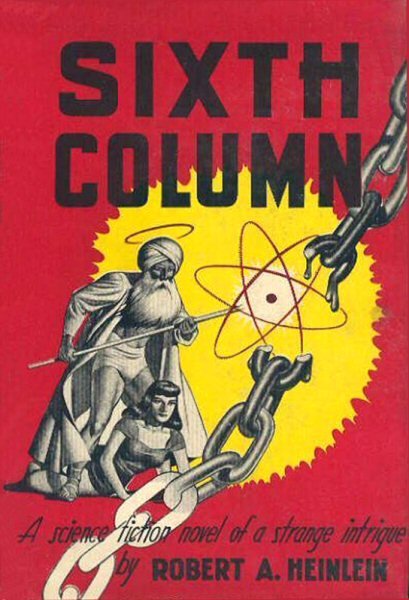
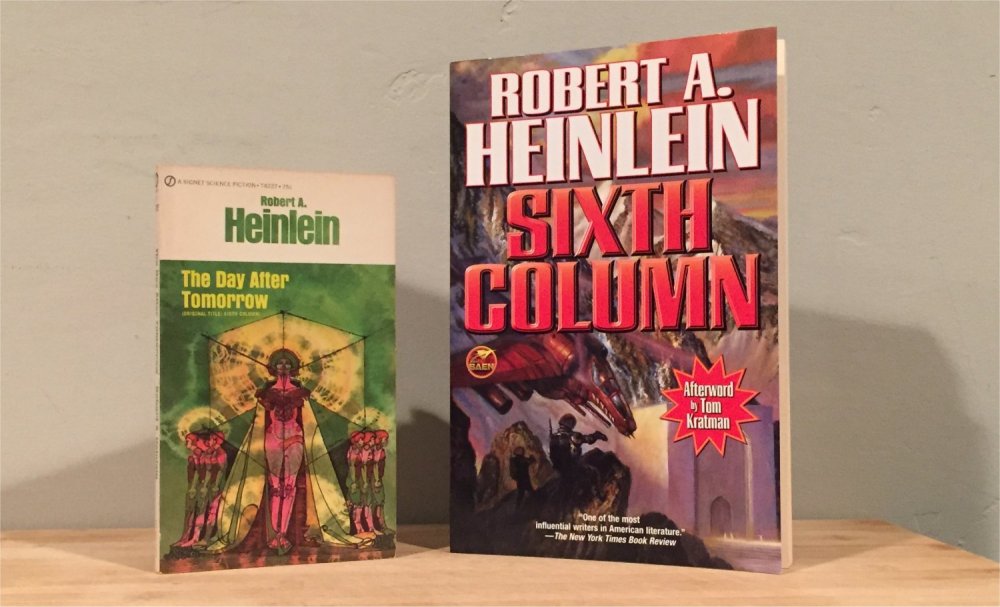
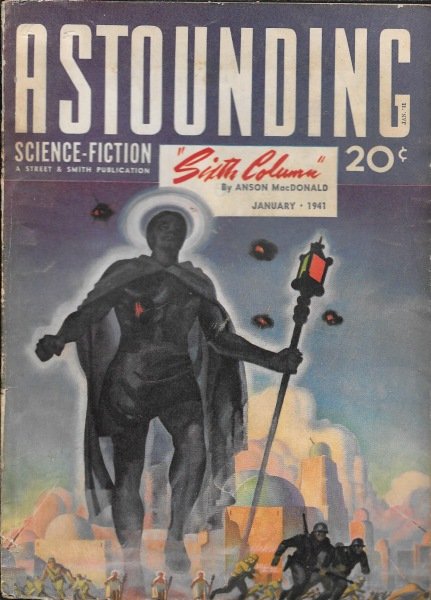
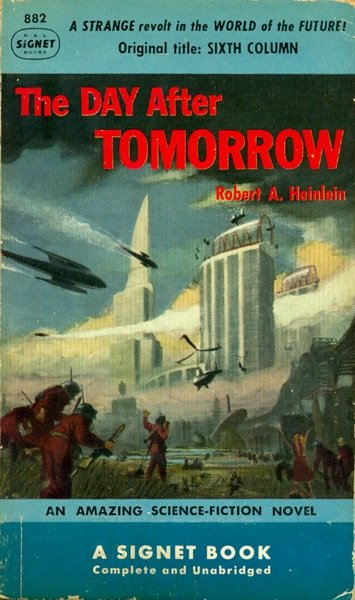
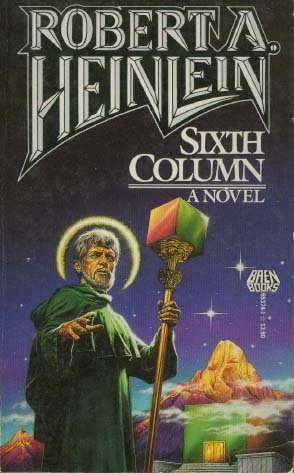
The older I get, the less I enjoy Heinlein. The preaching and obvious manipulation of the plots makes it harder to maintain a sense of suspended disbelief.
I admit to the same. fh.
Mind you, there’s also a strong nostalgic component to Heinlein for me. But still.. I haven’t read a Heinlein novel in the past 20 years.